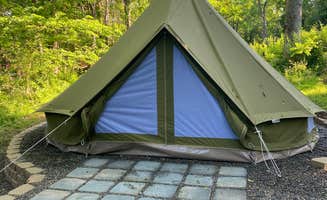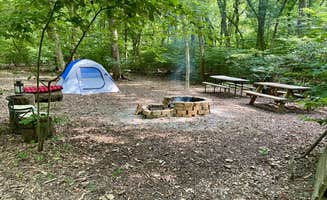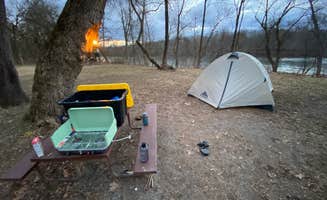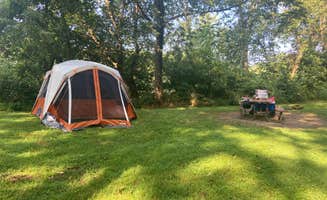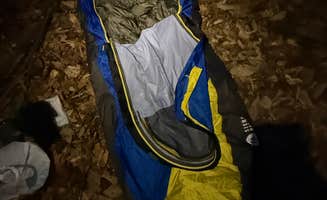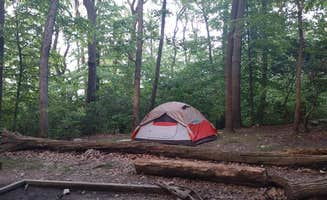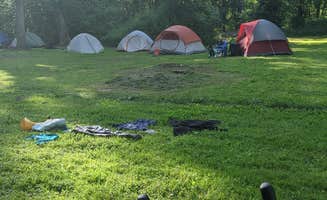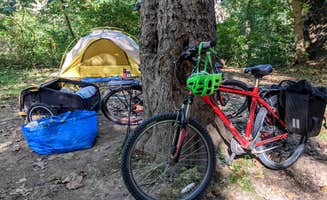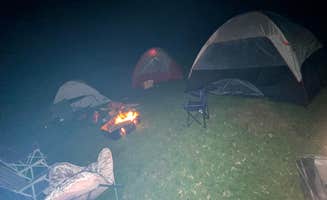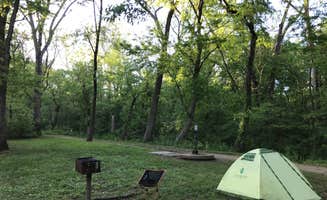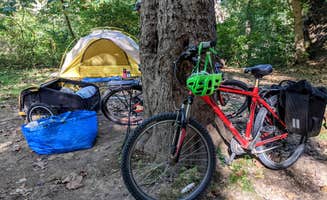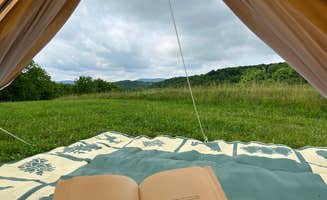Dispersed camping opportunities near Hagerstown, Maryland center around the Potomac River watershed and surrounding protected lands. The area encompasses elevations ranging from 250 to 1,700 feet, with summer temperatures typically reaching 85-95°F during peak camping season. Winter camping remains available at select sites, though water access becomes limited as seasonal pumps are winterized from November through April.
What to do
Hiking on the Appalachian Trail: Annapolis Rock Campground serves as a strategic basecamp for day hikes. Located at 1,700 feet elevation, the campsite requires "a hike-in trail only and offers very basic camping, which is all you need when hiking the AT," according to Teresa K. The campground connects directly to the iconic Annapolis Rock overlook.
River activities: Antietam Creek Campground provides direct Potomac River access. "The Potomac is mostly flat with some 'swirlies' for experienced paddlers. I also saw some people tubing," notes Michelle N. Sites nearest the river offer the easiest water access for fishing, swimming, and paddling.
Rock climbing: Technical climbing routes exist at Annapolis Rock. Cory D. explains the area "offers beautiful views and all kinds of single pitch rock climbing!" Most routes require personal equipment as no rental services exist at the campgrounds themselves.
Historical exploration: Walk directly from Gathland State Park Campground to explore Civil War monuments and the National War Correspondents Memorial. Located on South Mountain, campers report the site provides a central location for exploring multiple battlefields. Emerson K. describes it as a "solid camping area" where they "felt safe and had a great time."
What campers like
River views: The Potomac shoreline provides scenic camping near Hagerstown. At Antietam Creek Campground, Kevin D. appreciated the "small campground with a pit toilet right on the Potomac river" with "picnic table and fire ring with a few nice trees throughout the camp area."
Spring water access: Natural water sources enhance several campgrounds. At Annapolis Rock Campground, CHRISTOPHER B. notes there's a "short walk to cold natural spring for water" and Bob S. confirms the area has a "spring and compost outhouse." Treatment remains necessary for all natural water sources.
Social atmosphere: Open camping layouts foster community interaction. At Antietam Creek, Casey L. observed it's "nice if you're a social camper, we got to talk to many people and also got to enjoy a nearby camper playing his violin as the sun was setting."
Flat tent sites: Level ground makes tent setup straightforward. Shawn W. reports that Antietam Creek offers "flat campsites, fire rings & public well," while sites at Annapolis Rock have undergone "major restorations and preventative measures to reverse the damage from huge camping crowds of the past."
What you should know
Parking logistics: Many campgrounds require walking from parking areas. Nick C. explains at Antietam Creek "you have to park on the road and walk about 75 feet to your site," while Andrew M. elaborates that "you have to park on the opposite side of the canal and walk to your campsite. If you got one close to the bridge over the canal then you're 100ft from the car, but if not then it could be a little bit of a walk."
Fire regulations: Fire rules vary significantly between sites. At Horseshoe Bend Hiker-biker Overnight Campsite, fires are prohibited, while Sy A. notes that at Annapolis Rock "you can't have a campfire due to restorations."
Bathroom conditions: Facilities range from primitive to basic. Casey L. reports at Antietam Creek that "by the 3rd night they were really gross. We were at the site next to them and could smell them. Not pleasant."
Wildlife awareness: Venomous snakes inhabit rocky areas. Sy A. warns visitors to "be careful for the copperheads that come warm up on the rocky overlook" at Annapolis Rock.
Tips for camping with families
Choose sites with direct water access: Riverside locations provide natural entertainment. At Horseshoe Bend Hiker-biker Overnight Campsite, Miranda M. found a "wonderful spot on the river" that offered a secluded experience despite limited facilities.
Prepare for little privacy: Most tent sites offer limited seclusion. Casey L. notes that at Antietam Creek "all the sites are very open and run along the multi-use trail. People are constantly walking, running, and biking by."
Pack extra water containers: Water access varies significantly. While Miranda M. mentions Horseshoe Bend has a "water pump," many sites require treatment or hauling water from distant sources.
Consider shorter hiking distances: For the best tent camping near Hagerstown with children, select sites with minimal approaches. Bob S. describes Annapolis Rock as a "moderate difficulty 2+ mile hike from Route 40," which may challenge younger children with full packs.
Tips from RVers
Use tent-only campgrounds as basecamp: The best tent camping near Hagerstown lacks RV facilities, but tent campers can utilize Dahlgren Backpacker Campground as a midpoint refresh. Sean M. notes it has "a basic, but clean, bathroom with showers" and is "open only to multi-day backpackers."
Consider alternative lodging: When weather turns unfavorable, nearby options exist. Mulehalla offers both traditional tent sites and glamping experiences according to Ashley F., who notes the "sites are spaced far apart" with "tons of open spaces for tents."
Plan for limited services: No dumping stations or hookups exist at primitive sites. Sam M. explains that places like Dahlgren offer "indoor plumbing for a night" and "fresh drinking water," making them strategic stops during longer trips.


